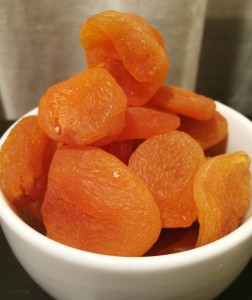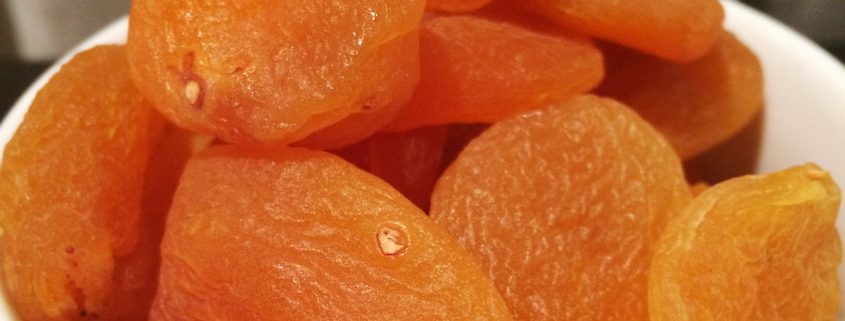Get Creative with Apricots
 Let’s talk about why we love apricots in honor of National Apricot Day. Not only apricots are full of health benefits, they can be sweet or tart in flavor for use in many ways.
Let’s talk about why we love apricots in honor of National Apricot Day. Not only apricots are full of health benefits, they can be sweet or tart in flavor for use in many ways.
Not to be confused with their relative, the peach, apricots are yellow or orange skinned stone fruits with a sweet to tart taste. The fruit can have a short fuzz or smooth skin and are typically more firm and grainy in texture compared to peaches.
These small fruits have roots traced back to Asia and are scientifically called Armenian Plums. Now they are largely produced in countries such as Turkey, Iran, and Italy. Apricots have a short harvesting period in the spring and summer in the United States.
Apricots are low in calories and full of fiber, vitamins, minerals, antioxidants, and phytochemicals. The vitamin A, carotenes, and zeaxanthin found in apricots may contribute to eye health. Additionally they will contribute to your daily dietary fiber and potassium needs.
Due to their limited availability in the United States this time of year, canned and dried apricots are very popular. These can provide a variety of health benefits just as the fresh fruit does plus additional benefits. Dried apricots are noted to be a good source of iron, containing between 1 – 2 milligrams per serving. The type of iron from plants is called non-heme iron. While iron that is predominately from animal sources is heme iron, non-heme iron is valuable, especially for vegetarians. Non-heme iron is not absorbed as well as heme iron, however absorption can be increased when eaten with vitamin C. Fortunately, dried apricots are a good source of both iron and vitamin C.
Canned and dried apricots can be found on store shelves year round. Be aware of the sugar content in the packages you are buying. Canned apricots often come in a syrup and should be rinsed to decrease the extra sugar and calories. You can also dry or puree your own fruits at home. Here’s how:
Drying Apricots:
- Start by washing firm, ripe apricots. They should not be very soft to the touch but should have a deep yellow or orange color for best results.
- Cut the apricots in half and remove the pits. Slice or cube if desired.
- Place the fruit, skin side down, in a single layer on a baking sheet lined with parchment paper. Bake at 130-160 degrees for about 10 to 12 hours. Decrease the temperature if you are using slices or cubes.
- Store the dried fruit in an air tight glass container for prolonged shelf life. Fill the container as much as you can in order to preserve the freshness.
Your turn to take action: Try adding fresh or dried apricots to your yogurt, oatmeal, salads, and more. Share your favorite way to enjoy them down in the comments section!


Leave a Reply
Want to join the discussion?Feel free to contribute!